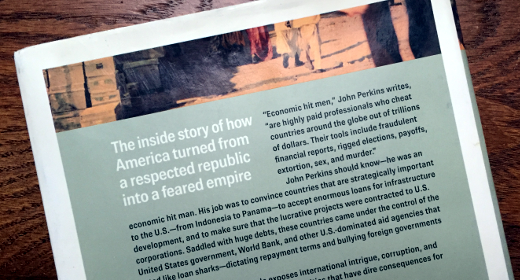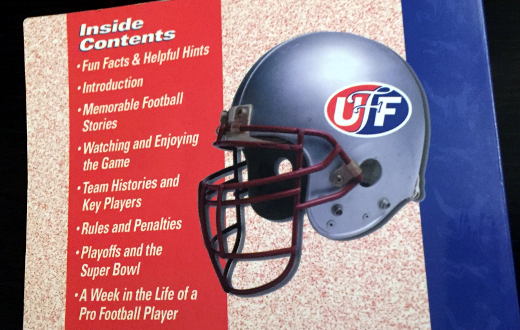My Takeaways From The Book Confessions Of An Economic Hit Man
Everything happens for a reason. That phrase is something I have always believed in. Even if I don’t know what that reason is, or don’t believe the reason when I hear it, I have always felt that somewhere, someone knows why something happened.
This phrase came to mind as I read the 2004 novel Confessions of an Economic Hit Man by John Perkins. The book, which he says is truly that, his confession – is about how corporations have worked and continue to work on behalf of the US government to gain influence, allies and assets from other countries for the benefit of said corporations and the US government, but not necessarily for the countries they are purporting to help.
As you might guess, Perkins states he was an economic hit man, or EHM. The book is the story of his life from growing up in New Hampshire to being offered the role and traveling the world doing the bidding of others through the consulting firm he worked for. When successful, he benefitted greatly. When not, he still got paid, but then handed the work off to others to get the job done, presumably at any cost.
As I read this tale of international intrigue, many thoughts swirled through my head, including the following takeaways.
Act Locally – Perkins traveled the world as an EHM. He didn’t do it sitting behind a desk in his Boston office. Granted this was the 1970’s and 1980’s and you didn’t have the tools of the Internet we have today. But if you want to be effective and close the deal, you have to directly connect with others, on their turf. I have done this before and in the case of an EHM, for good or bad.
Tell Your Story Well – With a topic like this, it is easy to dismiss it as a farce and conspiracy theory without even reading one word of it, Now I am not saying this story is 100% true, as I have no clue. I am simply absorbing what the author wrote. But what he wrote, though, is a well-told story where he ties world events in with his own tale. If it is 100% false, then he is an amazing fiction writer.
Everything Happens For a Reason – See what I wrote above. What Perkins wrote about may or may not be the reason – again, I don’t have any special insight, I can only take him for his word. Then again, what I’ve seen in headlines over the years, my hunch is there is more to the truth than fiction. And as Mark Twain once said, truth is stranger than fiction.
If you have any interest in current affairs, world politics or simply love a great story, I recommend Confessions of an Economic Hit Man. I bought this book myself, and as I pass along all books I read, this one is going to a good friend who is an international consultant who himself has traveled to all corners of the planet. Is he an EHM itself? I don’t know, and if he is I’m not sure I even want to know for sure.
Have you read this book by John Perkins? If so, what did you think? I welcome all thoughts in the comments to this post.
This is from The Hot Iron, a journal on business and technology by Mike Maddaloni.
Did you enjoy this? Subscribe to The Hot Iron by RSS/XML feed or Read by Email.
Book Take-Aways • Strategize • (0) Comments • Permalink
Digital Spring Cleaning
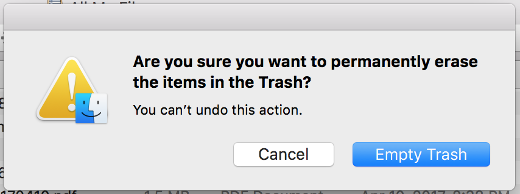
Call it a rite of passage or a subconscious impulse, but there is just something about the weather getting warmer and wanting to get rid of excess possessions. Though Spring is only a few weeks in as I write this, perhaps it was the warmer weather in Chicago (hello, a cookout in February?) that got me started with this sooner.
Personally, as I have purged much of the excess tangible things I have acquired over the past years, my spring cleaning this time was more virtual – specifically, digital. I have been carrying around some digital baggage for a while that was beginning to wear on me, let alone cost me money.
So I exchanged my broom and dustpan for my fingers and a physical trash can for one on my desktop and did the following.
Archive Excess Files Off My Computer – When I bought my Macbook I purposely got the maximum available memory and a smaller hard drive. Why? I don’t want to carry around a lot of unnecessary files. So I scoured my hard drive for what I truly didn’t need to carry around and 1) deleted what I didn’t need to own at all, and 2) archived what I needed to keep.
This activity freed up a lot of space on my hard drive, making searches more efficient, and mitigated the need to buy more online backup space, what I use it as part of my digital backup strategy.
Shuttered Old, Inactive Web Sites – As someone who, among other technology skills, builds Web sites, I still had out there a few sites that, though I had high hopes and intent for, had languished due to lack of time as well as changes in my personal priorities. So I closed them – backing up all of the code and databases – and in most cases redirected the domain names to my blog at TheHotIron.com (link) where you are likely reading this.
I would be remiss to say some of those sites still had some sentimental meaning to me, but in the end, it save me some emotional baggage, and led to the next cleaning task going a lot smoother.
Consolidated Web Hosting Accounts – All these Web sites and services have to live somewhere, and for me they were with multiple companies. My goal was to consolidate the 4 of them into 1. However, as I got into it, I decided to leave it to 2 for reasons that, if this isn’t boring enough for some of you reading it, would certainly put you to sleep!
Where this task saved some money, it also allowed me to isolate and think about what I need for Web hosting, leading to an even better way to manage it, and save even more money. This is a work in process as a result, but one that has already deliver gains.
Dropping Domain Names – As someone who has worked a lot with domain names, from advising to managing domain name portfolios for individuals to publicly-traded firms to everyone in between, it’s probably needless to say I have registered a number of domain names for myself over the years. Just like a financial portfolio, a domain name portfolio has to be reviewed, evaluated and changed periodically. In this case, that included dropping domain name.
For this task, similar to dropping domain names, there were a few emotions I needed to put aside. In other cases, I just realized having the .com for a domain was enough and the .biz and .info were not needed. The savings from this cleanup will pay over time as some domain names don’t renew right away.
Antialiasing, or Deleting Email Addresses – Over the years I have employed various strategies to manage email. Where some have worked great, like managing my inbox to zero (LINK), others proved to be more work that saved. This was the case with setting up email aliases or forwarders, which were separate email addresses that forwarded to my main email address. I set them up to use for specific purposes, like eCommerce (.(JavaScript must be enabled to view this email address), noting xyz.com is not my email domain!) and mailing lists (.(JavaScript must be enabled to view this email address)), etc. Et. Al., yada-yada, henceforth… you get the picture.
As you might guess, I had a lot – over a dozen aliases when I stopped counting – and though they were not being actively used, they were the destination for most of my spam email. So I deleted them, or “antialiased” as I like to call it. I now have 1 email address, and a heck of a lot less spam.
Canceled My Yahoo Accounts – As Spring rolled around, so did the word that Yahoo had yet another major password breach. I have had Yahoo accounts for over 20 years, namely using them as backup email addresses and tying them to Flickr accounts when they acquired the photo sharing service. As time went on, I never used the Yahoo portion of the accounts, as well uploading photos to Flickr went out of vogue for me.
So it was with less emotion that I canceled my Yahoo accounts. Nobody was emailing me at those addresses, and there was little traffic to my Flickr photos. Granted all of those photos will disappear from the Web, but if anyone really needs to see pictures of me sitting on the visitors dugout bench at Wrigley Field, contact me directly.
Deconstructing Digital Spring Cleaning
Digital Spring cleaning is similar to eliminating tangible items, but is more for peace of mind, not to mention possibly cost savings. This peace of mind gave me the same relief I get by packing up a box of stuff and shipping it to GiveBackBox or dropping it off at Goodwill. It is also something I will plan doing every year along with getting rid of physical crap.
Have you done digital Spring cleaning yourself? Or have you even thought of it before? I welcome your thoughts on it in the comments to this post.
This is from The Hot Iron, a journal on business and technology by Mike Maddaloni.
Did you enjoy this? Subscribe to The Hot Iron by RSS/XML feed or Read by Email.
Domain Names • Strategize • Technology • Thrive • Web Development • (0) Comments • Permalink
7 Tips For Giving Your Younger Kids An Old iPhone
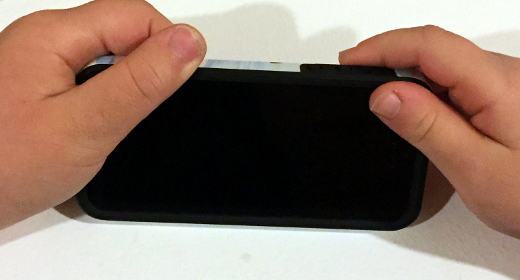
A common situation in my household and others is when parents upgrade their mobile phones they then give the old one to their kids. With more and more apps tailored to kids, their desire to take pictures as well as shorter device upgrade cycles, it is a logical scenario. Not to mention kids know how to use them better than most adults and, frankly, they make for the occasional babysitter, but I digress.
As good as they are, and as much as they can be used for educational purposes, simply handing over your old device without restrictions when you get a new one is not the best approach.
For the iPhone and Beyond
Here I will be specifically talking about the Apple iPhone, as it is what I use and know best. Where some or all of these tips may apply to other mobile devices, such as an Android, I don’t know them as well, so I will only vouch for what I know and lessons I have learned.
Where there are some features for managing the use of them by the kids, and apps are continuously coming onto the market to address this, there is already some features and settings out of the box built-into iOS – the iPhone’s operating system – you can leverage, along with good old-fashioned common sense.
As someone who first did this years ago, and has learned a few things along the way, I’d like to share with you some tips I learned – some the hard way – for giving a kid an iPhone. Note many these apply to whether or not the iPhone you give has a SIM card in it or not, and I indicate which ones apply to specifically to having one or not.
1. Wipe It Clean – Once you have activated your new iPhone, synced all of your photos, contacts, calendar, music, apps, etc. to the new device and did one final backup of it, have your kid start with a “fresh” iPhone by wiping it clean, or doing a hard reset. This article from Lifewire takes you through doing a hard reset on various versions of the iPhone. This way, your kid will not see any of your old information, apps, texts, notes, email… or something you may have forgotten was on it.
2. Use Your Own Apple Account – By using your own apple account for the kid’s iPhone, they won’t be able to install any apps on their own, and it will require you to enter your own password to have any added to the device. Any photos they take will also appear in your Photo Stream, as another way of monitoring their activity. And when you enter your password, make sure nobody else sees it!
3. Use a unique passcode, different from your own – Their iPhone should be locked with a passcode… just like yours is, right? You should know their passcode, and tell them not to change it (they will likely find where to do so), and if they do and don’t tell you what it is, you will have no choice but to wipe it clean again.
4. Turn Off Cellular Data For Apps – Streaming Pandora and watching all of the Angry Birds app videos is certainly fun, and can add up if they are eating at cellular data. If your device has a live SIM card in it, make sure to turn off the settings to use cellular data, which will force them to use WiFi for such app features. Even with recently launched “unlimited” data plans, the more data you use, the slower the connection can be.
5. Turn Off Notifications In Apps – It’s one thing if they use the iPhone, it’s another if it keeps beeping and vibrating for whatever random notifications. Turn off these notifications so they have less reasons to keep it in their hands… any more than they are now. Where you can do it for already installed apps through the Settings, you can also be with them when they first launch a new app, and when prompted to show notifications, you can always decline them.
6. Do not give them a charger – If they don’t have a charger and need their iPhone recharged, they need to give it to you. Granted many households have chargers everywhere (mine included) but one place should not be in their possession. Most likely the battery on your older iPhone is not too strong and draining quickly, so it this adds an additional control mechanism on the device.
7. Do not “give” the iPhone – You’re probably reading this and saying, Mike, so far you have been talking about giving them a device, now you’re saying not to? What the… Ok, ok, let me explain! The kiddos can use the device – customize the icon locations and wallpapers, get a case for it… but it is still your iPhone and their use of it is a privilege! A privilege can be revoked if abused or as a consequence of not getting out of bed in the morning or whatever other challenge you have with them as a parent.
Take a few steps before you simply hand over the old iPhone, and you’ll be glad you did.
Demystifying Giving Your Kid An iPhone
Parents are faced today with challenges they themselves and their parents didn’t have to deal with, one being mobile technology. Where it is impossible to watch the kids constantly and how they use the devices, taking some preventative steps will go a long way to instilling responsibility in using the technology.
This is from The Hot Iron, a journal on business and technology by Mike Maddaloni.
Did you enjoy this? Subscribe to The Hot Iron by RSS/XML feed or Read by Email.
Mobile Technology • Strategize • Technology • Thrive • (0) Comments • Permalink
The Simplest Web Site Content Plan
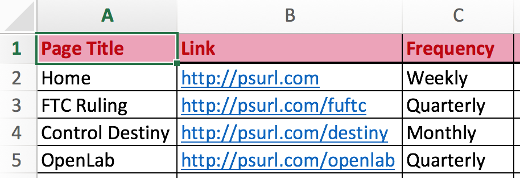
Quick – how accurate is your Web site?
My deepest apologies if I caused you to have anything from a puzzled look on your face to a panic attack. But if you own a Web site and have any sizable amount of content, it should be periodically reviewed to see if it needs to be updated.
Where there are tools available to help this – perhaps within your content management system (CMS) where you update your content, or external, third-party tools, I’d like to share a basic, straightforward and low-tech way to remind you to review your content.
From Louisville With Love
In a past role I managed the technical environment for our Web site and Intranet, working with staff from Marketing together as the Web team. One day someone from the facilities department stopped by my desk, and the brief conversation we had went something like this:
Julie (not their real name): “Hey, Mike.”
Me: “Hey, Julie”
Julie: “You know the Louisville, Kentucky office moved, right?”
Me: “Yea, I saw that someplace… why are you asking me?”
Julie: “Because the old office address is still on the Web site – you do something with that, right?”
After that thrilling conversation, I got on the phone with my marketing counterpart (we’ll call her Natasha) and has basically the same conversation with her, however I said Julie’s lines. This was followed by a few choice adult words by both of us, then Natasha proceeded to make the change to the Web site.
Maintaining With a Plan
Still on the phone, we both could hear each other exhale. We were glad we were able to make the change quickly, then the conversation continued around how much other outdated content was out there, updating it, and a plan to do both of these tasks moving forward.
As with many Web sites out there, content has many owners. The marketing teams for each product managed their own content, and Natasha was responsible for the overall “corporate” content. We didn’t have a feature-rich CMS for the site that could alert us to “expired” or “expiring” content, nor were there many decent comprehensive content tools at the market at the time – and we looked – so we had to come up with our own solution.
What we came up with was straightforward yet highly effective, and it came about with these steps.
1. First I listed all pages of the Web site and put it into a spreadsheet. As we had a Sitemap page it made this task easy.
2. Natasha then took the spreadsheet and added a column called “frequency” and proceeded to make the frequency of how often page content should be reviewed (e.g. weekly, monthly, quarterly).
3. I took a look at her revised spreadsheet and made suggestions regarding the frequency – remember, I am much, much more than just a technologist!
4. Natasha, using the final spreadsheet as a guide, created calendar alerts with links to the pages as reminders to review the content.
That was it, and it worked.
Of course some content would be reviewed more frequently, namely when it was modified or other business triggers occurred. The point of the above exercise though was to ensure that, on a regular basis, all of the Web site content would be reviewed for accuracy. In addition to this, I would perform regular link checks to ensure the content was technically connected.
What Works For You?
As you are reading this, I hope you are thinking of the content of your Web site, as there is no time like the present to be thinking about it! In addition to the site itself, your extended Web presence includes your social media profiles and feeds. As it’s easy to tweak one or more and forget about the others, perhaps this “detached” solution of using your calendar will work for you too?
Deconstructing a Web Content Plan
In this hyper-speed world of content development, it’s not unusual to have inaccurate or incomplete content out there, exposed, for all to see. By coming up with a straightforward and highly usable plan, you will be able to get ahead of long-standing errors and omissions in your Web presence.
This is from The Hot Iron, a journal on business and technology by Mike Maddaloni.
Did you enjoy this? Subscribe to The Hot Iron by RSS/XML feed or Read by Email.
Blogging • Business • Strategize • Web Design • (1) Comments • Permalink
My Takeaways From The Ultimate Female Fan Guide to Pro Football
The Super Bowl is a game you prepare for mentally, physically or both – depending on your level of fandom, and what you are watching it for. It is unique among sports as even non-fans watch, for the commercials, because they are at parties, for curiosity sake, et. al.
If you are a football fan, you realize the complexity of the rules of the game – realize in that you understand them all, none of them, or as many are, somewhere in between. How much you may know is most likely influenced by if you played football, was taught by a parent or someone else close to you or you learned on your own… he latter being the case for myself. Football for me wasn’t my first love of sports, but has become it. I grew up a baseball fan, which came from my Mom’s love of the Boston Red Sox. While I was growing up, the New England Patriots were horrible, and the bottom rung of the sports ladder in New England, way behind the Sox, Boston Celtics and Boston Bruins.
So when I decided on a whim to get season tickets for the Patriots back in the early 90’s, before they became the multiple Super Bowl winning team they are now, where I had some knowledge of the game, I had much to learn. As I was in my mid-20’s at that time, I was a little embarrassed that I didn’t know more of the game, and sought out a way to learn it. I found a book that not only helped me then, but over 20 years later as well.
I found the book The Ultimate Female Fan Guide to Pro Football at the Patriots Pro Shop, which was adjacent to the team’s former home field, Foxboro Stadium. Flipping through it, I realized it was exactly what I needed to learn the game. Two decades later I found it among some things, and I dusted it off and re-read it. My takeaways, as follow, come from my recollection of my initial read as well as this recent unearthing of it.
Structured Learning Is Sometimes Better Than On-The-Task Learning – As most of my training and learning over my career has been on-the-job or just-in-time and supplemented by some training, depending on the topic structured learning is the better way, as it was for me with football. Simply sitting down and watching 60 minutes of plays over 3 hours may not even cover everything, and taking a methodical approach supplemented with watching the game helped me learn it well.
Anecdotal Information Provides Greater Context To Formal Knowledge – Learning the formal rules of football, like any other topic, is important to learning about what you are watching. But for a game like football which has evolved over close to 100 years, having familiarity of the evolution and events which led to where the game is today is great to the deep understanding of the game. Betsy Berns mixes helpful hints and fun facts throughout the pages of The Ultimate Female Fan Guide to Pro Football, all of which provide greater context to the main information presented.
What Taught Me Helps Teach Others - When I found the book, I wanted to go through it again as I am teaching my daughter the rules of football. As I am writing this I am sitting down with her and we are going through it together, and I am helping her understand both the rules for and my love for the game, which I hope will lead to her own appreciation and affection for it too.
As my copy of The Ultimate Female Fan Guide to Pro Football came out over 20 years ago, what I have is now out of print and is now known simply as The Female Fan Guide to Pro Football by the same author. Where I haven’t read the newer version specifically, I can only imagine it is better (not to mention more up to date) than my version. I recommend it to any fan of any reading age – and gender – as a great way to learn this great game.
This is from The Hot Iron, a journal on business and technology by Mike Maddaloni.
Did you enjoy this? Subscribe to The Hot Iron by RSS/XML feed or Read by Email.
Book Take-Aways • Strategize • Thrive • (0) Comments • Permalink

